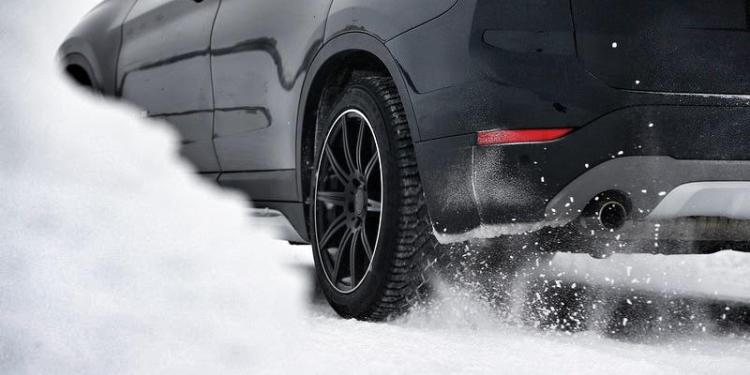
As temperatures drop below 45-degrees Fahrenheit, and extreme winter weather hits, now is the time to change to winter tires and Continental’s VikingContact 7 is designed specifically for snow and ice traction. In addition to the proper tires, this 10-point checklist will help you prepare your car for winter.
As Old Man Winter starts to make appearances across the U.S., it’s time to start thinking about winter tires. Did you know that once the temperature drops below 45-degrees Fahrenheit, an all-season tire’s ability to grip the road decreases? It’s a fact. Severe weather presents a new set of driving challenges – slush, ice and hard-packed snow – and with it, the need to replace your all-season tires with winter tires if you live in a part of the country where temperatures drop below 45-degree Fahrenheit on a consistent basis. With all the performance capabilities built into today’s vehicles, they will only perform as consistently and responsively as the tires they run on. In winter weather, that can mean the difference between focused braking power and out-of-control handling.
“All-season and winter tires are about as similar as sandals and snowshoes,” said Travis Roffler, director of marketing, Continental Tire. “Summer and all-season tires just aren’t designed to hold the road in the same way that winter tires do. During winter, without the proper tires, drivers can experience a dramatic drop in grip, resulting in longer stopping distances, less driving control and by far, less confidence. It’s also important to install winter tires on all four wheel positions for optimal control.”
Continental has been a main driving force in the extraordinary improvement of winter tire performance over the years. With cutting-edge technology, today’s modern winter tires are uniquely designed to deliver confidence and control in snow, ice and cold weather conditions. They are specially engineered to deliver a substantial increase of traction over all-season radials – by as much as 25 to 50 percent. That’s enough gripping-traction and braking power to avert a severe weather-related accident.
Tires such as the VikingContact 7, are specifically designed for snow and ice traction. The tread stays pliable in sub-zero temperatures increasing the contact area and enhancing grip on slippery road surfaces. A hallmark of the tire is Continental’s industry-leading, PolarPlus Technology, which helps to reduce braking distance in wet, snow and ice. Additionally, the consumer-friendly alignment indicators visually alert drivers of vehicle misalignment which allows for a correction before tires are worn out.
TIRE TO-DO’S FOR WINTER
When making the switch to winter tires, it’s also a good time to have your tires rotated. Make sure to check the tread depth of your tires as well. This can be done by placing a penny into several tread grooves across the tire. If part of Lincoln’s head is always covered by the tread, you have more than 2/32” of tread depth remaining which is the recommended depth per the National Highway Transportation Safety Administration (NHTSA). Lastly, check tire pressures, including the spare. Tires can lose one pound of pressure for every drop of 10-degrees Fahrenheit so it’s important to follow the pressures outlined in the owner’s manual for your vehicle. Also, remember the importance of storing your summer/all-season tires.
WINTER CHECK LIST
Once your car is properly shod for the season, there are other steps drivers can take to prepare for the cold, icy and snowy conditions of winter. Now is the time to give your car a thorough checkup. Follow this list of 10 items to help prepare for winter driving (note: some work may need to be done by a professional):
- Antifreeze – Make sure the level is full and at a 50/50 mix of water/antifreeze.
- Wipers – Replace wipers for maximum performance in snowy, slushy, icy conditions.
- Wiper Fluid – Fill up because one long mile in slushy conditions behind a semi-truck can mean low visibility.
- Shocks – Have a professional check your shocks as defective shock absorbers increase braking distance and shorten the life span of tires.
- Battery – Clean posts and check for optimum performance.
- Brakes – Have brakes inspected for optimal performance in slick conditions.
- Spark plugs – Check for wear and replace if necessary.
- Tires – Check tread depth and pressures and make the change to winter tires if warranted.
- Emergency Kit – Carry an emergency kit that includes items like: flares, small shovel, sand or kitty litter, snow brush/ice scraper, jumper cables, flashlight, extra batteries, extra cell phone charger, gloves, boots, blankets, and high-energy snacks.
- Extreme Traveling - If you are a winter sports enthusiast traveling in the mountains or are planning a long drive across the country to Grandma’s house for the holidays, consider carrying snow chains. They may be required in certain areas to drive on the road or over a mountain pass.
